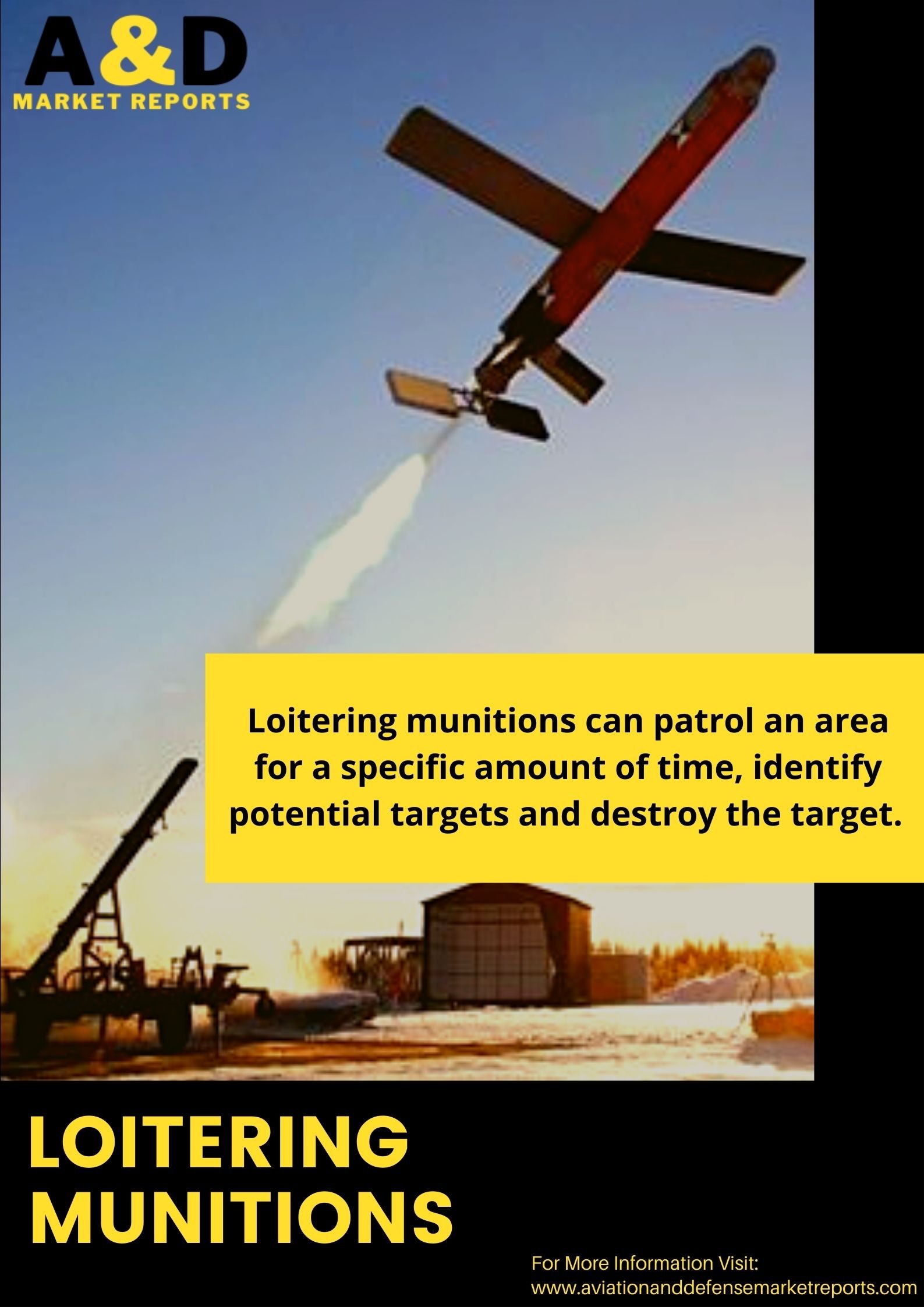During the First World War Kettering Bug was one was the first expendable drone which crashed into its target and exploded. Similarly loitering munitions can patrol an area for a specific amount of time, identify potential targets and destroy the target. Most of the loitering munitions in service today are capable of destroying lighting armored vehicles such as APC and IFV.
Loitering munitions can be large and platform launched and also small is size which are easily portable. Loitering munitions use electro optical system and infrared system to identify and engage targets. Loitering munitions are gaining momentum due to their significantly lesser cost of procurement and operation when compared to manned aerial platforms and missiles. Based on configuration, loitering munitions are classified as conventional fixed wing, canard, delta-wing, cruciform wing, tandem wing and rotorcraft. Based on power unit, the loitering munitions are classified as battery powered and combustion engine powered. Small sized loitering munitions are suitable for special forces and light infantry units. Loitering munitions provide critical operational capability for special forces by helping them target and destroy key mission critical infrastructure behind enemy lines.
In the current Russia – Ukraine conflict, loitering munitions are deployed by both the sides to target radar stations, command and control structures and lightly armored vehicles. Ukraine’s indigenous manufacturers of loitering munitions are CDET and Athlon Avia. CDET RAM loitering munition has a flight time of 40 minutes. Maximum service distance of 30kms and payload capacity of 3kg. The munition is catapault launched and is driven by an electric motor. The munition is capable of carrying out precision attacks on lightly armored vehicles and structures. There are multiple warheads such as thermobaric to hit small armored vehicles, anti- tank HEAT and HE fragmentation warhead. The munition has a cruising speed of 70kmph. Athlon Avia’s ST-35 silent thunder is vertical launched loitering munition. A six propeller multi rotor UAV carrier the munition up to a specific altitude and then the munition is dropped to glide on own power. The munition has a range of 30kms, flight time of 60mins, cruise speed of 120-140 km/hr. payload capacity of 3.5kg along with IR or television tracking. Ukraine is also supplied Switchblade 600 loitering munition by the US. Switchblade 600 is manufactured by AeroVironment. It is an electric motor powered canister launched tandem wing loitering munition with a range of 90+ kms and endurance of 40+ mins. It has an endurance of 40+ mins and can be used against armored targets. Ukraine also operates WB group’s Warmate loitering munitions. It has a payload weight of 1.4kg, endurance of 70mins and operating range of 15kms. They have maximum attack speed of 150kmph. It can be launched from Pneumatic system and has an automatic recovery system for the reconnaissance variant. Warmate is capable of lightly armored vehicles and command and control structures.
Russia’s loitering munition requirement is fulfilled by the ZALA Lancet – 3 loitering munition. Lancet – 3 is manufactured by the Zala Aero Group. The lancet 3 was already tested in the Syrian conflict and it now deployed in Ukraine. The lancet -3 can carry warhead weighing up to 3kg. Its maximum speed is 110kmph, range of 40kms and endurance is 35+ minutes. The system can be used for precision strike and reconnaissance missions. It has a maximum attack speed of 300kmph.
Israeli IAI manufactured Harpy loitering munition system has a delta wing configuration and has a warhead weighing 16kg. The system has a communication range of 200kms. The system has abort functionality to abort the attack run. Harpy autonomous system can be used in SEAD (Suppression of Enemy Air Defence) to destroy SAM sites and Radars crippling the enemy’s air defense and command structure. Israeli Uvision Hero 900 can carry different warheads, fuses and EO/IR payloads. It can carry warhead weighing 20kg and has a range of 250kms. It has a gasoline powered engine and has an endurance of 7 hours. The system can be launched from canisters and also from air, ground and naval platforms. It has embedded abort capability, automatic re-entry into loitering mode, target re-engagement and parachuted recovery modes.
Loitering munitions will continue to evolve and gain importance in the battlefield due to their significantly lower cost of procurement and operation. Recoverable loitering munitions will gain popularity and further decrease the cost of operating these systems. Loitering munitions are a formidable cost effective alternative to manned aerial platforms and missile systems. Loitering munitions can cripple defensive infrastructure without putting human operators at risk.
